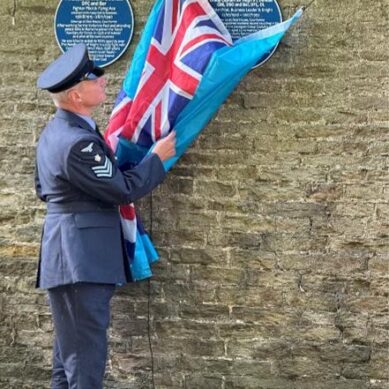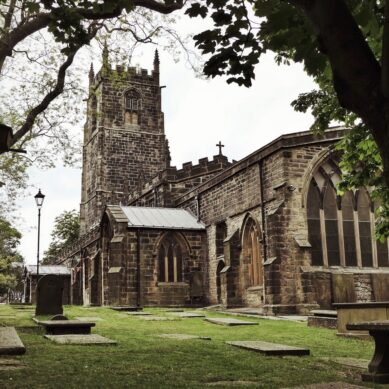This year marks a historic milestone: 200 years since the birth of the modern railway.
In September 1825, George Stephenson’s Stockton and Darlington Railway made its first journey through County Durham, igniting a transport revolution that would shape the UK and the world for centuries to come.
While it wasn’t the first train journey, or even the first steam locomotive, Stephenson’s Locomotive No. 1 opened possibilities for the paying public.

Barnsley’s pioneering engineer, Joseph Locke, was a pivotal figure in the railway’s early heritage. He worked for George Stephenson and his son Robert up in Newcastle manufacturing locomotives, before becoming assistant engineer on the Liverpool to Manchester Railway. Locke also drove the iconic ‘Rocket’ on the line’s launch day in 1830.
As a civil engineer, Joseph Locke went on to build the Manchester to Sheffield Line, including the first Woodhead Tunnel in 1845 – then the world’s longest at over three miles.
Rail transport was one of the most important technical inventions of the 19th Century and a key component of the Industrial Revolution. Railways built towns, created jobs, and connected people in ways that had never been possible before.
The Penistone Line Partnership has been celebrating the bicentenary with special events and art projects to highlight the historic route’s enduring role in local life.
A children’s art competition was won by ten-year-old Douglas Kirk who drew a royally rare train carrying the crown jewels. The red and yellow train – which is only seen twice a year – was travelling from Penistone to London King’s Cross to collect the crown jewels ahead of a tour around the country. With just a driver and a guard from the Household Cavalry, the jewels were on display from the first carriage window.

They also held a photography competition focusing on the three largest of all ten viaducts that sit along the route – Lockwood, Penistone, or Denby Dale.
The stupendous Lockwood Viaduct is the longest, with 32 stone arches over its 340-metre length. Straddling the River Holme, it reaches a height of 41-metres above the river and there used to be a local challenge to try and throw a cricket ball over the top of it – though we don’t recommend attempting it for safety of the train drivers and passengers!
Penistone Viaduct is South Yorkshire’s most impressive, with 29 arches spanning 320 metres. Parts of it collapsed in 1916 while an engine was stationary on it. The driver and fireman managed to get away safely, but the steam engine fell into the void.

The viaduct at Denby Dale is a striking structure, with 21 arches over 300 metres. But did you know that it actually started life as a timber viaduct? All viaducts on the line were supposed to be made from stone, but a stonemason strike, inflated cost of stone and rushed construction meant the Denby Dale viaduct was built in wood instead.
It was ill-fated, blowing down in a gale in 1847 before it had even opened. Though wooden viaducts were declared safe by Robert Stephenson in 1851, the replacement at Denby Dale was an obvious fire hazard and, each day, railway workers had to refill fire buckets with water along its whole length.
As you can imagine, the wooden structure wobbled as every train travelled over it. After being declared unsafe in 1869, the current stone one was built in the late 1870s and opened in 1880.

Penistone Line Partnership received over 100 entries to their photography competition and the public has been given the deciding vote. The winning photographs will be showcased at platforms along the line and on Scenic Rail Britain’s website.
As we celebrate 200 years, it’s also important to look ahead to the future of community rail. Penistone Line Partnership is using the anniversary to promote their vision for the next 200 years: greener, more inclusive, and deeply rooted in local identity.
With a growing emphasis on sustainability, accessibility, and community engagement, the legacy of those first rails continues – not as a relic of the past, but as a blueprint for modern travel.

The Penistone Line service runs once an hour, but this is expected to be doubled in the coming years thanks to government funding. Until the 1980s, the line had two tracks but has been a single track for almost 40 years.
Kirklees Council has received £48 million to draw up plans to upgrade the infrastructure and reopen the second track, allowing for two trains an hour in both directions and cut down journey times between Sheffield and Huddersfield to under an hour.
It is hoped that the government will invest a further £70m to undertake the upgrades, as well as providing level access at all 17 stations and making improvements at the bottleneck between Sheffield and Meadowhall.
Find out more about the anniversary at www.railway200.co.uk










